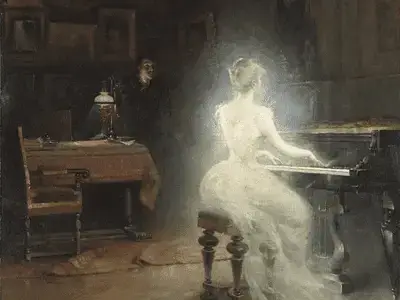George Roux (1853–1929), a prolific French artist and illustrator, left an indelible mark on the world of book illustration, particularly through his collaborations with famed science fiction author Jules Verne. His illustrations for Verne’s “Les Voyages Extraordinaires” series are celebrated for their ability to capture and expand upon the writer’s fantastical narratives, giving visual form to the extraordinary adventures and inventions that Verne imagined.
Early Life and Career
Born in 1853, George Roux’s career spanned several decades during which he honed his skills in various forms of art, including painting and illustrating. He is perhaps most famously known for succeeding Léon Benett as the main illustrator for Jules Verne’s novels published by Pierre-Jules Hetzel. Roux’s illustrations were integral to the success of Verne’s novels, helping to visualize complex scenes and futuristic inventions that were difficult to imagine at the time.
Collaboration with Jules Verne
Roux illustrated numerous Verne novels, including “The Purchase of the North Pole” and “The Master of the World.” His work is characterized by a keen attention to detail and a vivid imagination, aligning perfectly with Verne’s detailed and speculative writing style. His illustrations not only brought the stories to life but also contributed to the cultural iconography of science fiction as a genre.
Artistic Style and Techniques
Roux’s illustrations were predominantly created using engravings, a popular technique in the 19th century that allowed for high-quality reproductions in printed books. His style is noted for its clarity, precision, and ability to convey action and drama, making the fantastical elements of Verne’s stories seem more real and tangible. Roux’s ability to meld scientific accuracy with imaginative speculation made his work particularly effective and beloved by readers.
Legacy
Despite the significant role he played in the visualization of some of the most popular novels of the late 19th and early 20th centuries, George Roux’s name was often overshadowed by the literary giant he illustrated for. Today, however, there is a growing appreciation for his contributions to art and literature. His illustrations continue to be studied and admired for their artistic quality and their pivotal role in defining the visual standards of early science fiction.
George Roux’s work remains a testament to the enduring power of illustrations in enhancing and expanding the literary experience. By bridging the gap between text and imagination, Roux played a crucial role in shaping the early visuals of the science fiction genre, making him a significant, if sometimes underrecognized, figure in both the art and literary worlds.
























